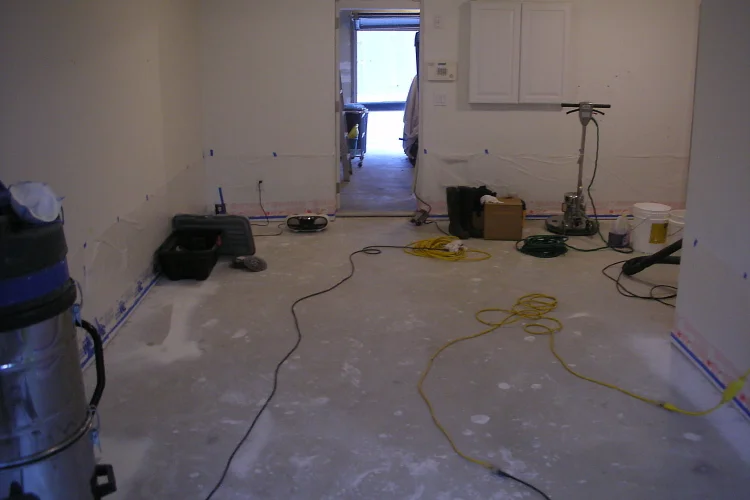Witalec Residence
This is a residential condominium basement concrete floor of only about 500 square feet. You can see all the drywall mud and paint spatter and overspray left from the building process.
The concrete itself was in great shape for staining, and it was important not to damage it during the cleaning process. We detergent scrubbed the floor with a rotary floor machine and black stripping pad, scraped problem spots with a 4" razor edged hand tool, then dry-sanded off remaining residue..
With the floor perfectly clean, we spray applied the acid stain. The dampness reveals the "mud-cracking" in the concrete caused by inadequate curing at the time of the pour. This cracking actually enhances the effect of the acid stain, resulting in a more natural "stone" or "marble" appearance.
We sealed the floor with two coats of a water-based clear epoxy. Epoxy sealers enhance or deepen the color of acid stains and create a wet look.
This floor ended up with a perfect acid-staining result, despite the original mess. Most contractors wouldn't even have tried to get this floor clean - they would have simply recommended grinding everything off and applying metallic epoxy. Not only would this have cost the customer more, but it wouldn't have achieved the same natural-looking stone result.










